Hosting Life
2020 has a certain ring to it; the staccato rhythm of the repeated number is direct and distinct. Connotations of clear and precise vision are pertinent; the wildfires raging in Australia are a testament to the impact that our species is having upon the planet. It’s time that we look ahead with sharp focus and start making conscious and challenging decisions in the way that we manufacture and consume.
Over the past year or so we have been reporting on how designers are making it their priority to create solutions for the growing list of issues that we face as a species, and 2020 will be no different. The devastation to life caused by the extremities of climate change; currently but not exclusively stressed by the fires in Australia, forces us to think about prevention as well as how we respond to the issues already taking place. The fragility of life has been underlined; so how can designers (and consumers) help to sustain life of all kinds upon the planet?
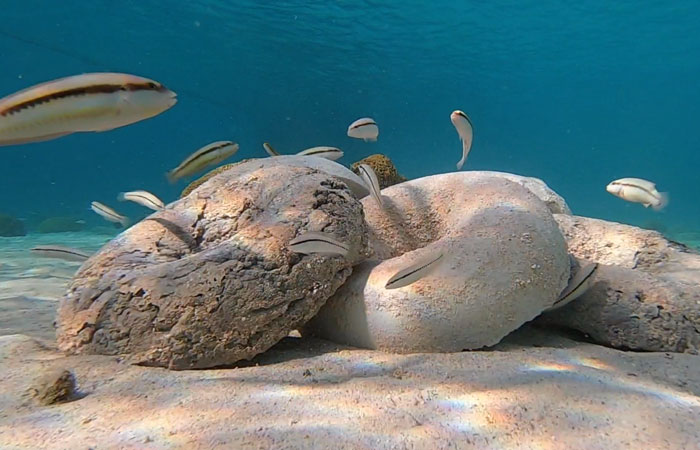
Amenda Kelders’ project Kas’i Koral was triggered as a response to a very specific event that took place back in 2010 around the coastline of northern Venezuela. Hurricane Tomas ripped through the area and had a devastating effect upon the coral reefs surrounding the island of Curacao, destroying nearly 50% in its wake. Kas’i Koral is a play on words in Papiamentu meaning “almost coral” but also literally means “coral house.” The aim of the project is to help create fertile ground for fledgling coral and locals and tourists are the intended architects. Beach-goers can donate 5 euros and receive a kit that includes a donut shape mould into which you mix plaster and seawater. The resulting form can then be placed on the seabed and once enough are piled up together, fish and other aquatic wildlife will move in, in turn creating the algae on which coral polyps can feed. Whilst the project may have developed from a specific natural disaster, it is not geographically exclusive and as more coral reefs struggle, it may well offer a transferable solution to the problem.
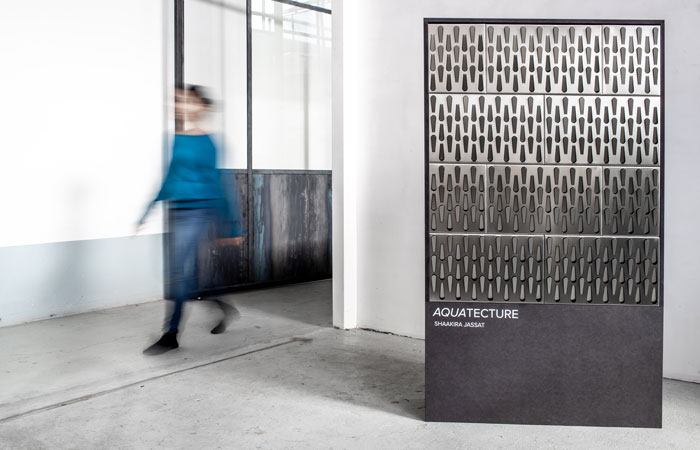
As well as offering a home for coral, the ocean is also credited with being the place of origin of all life forms on earth. Water is of course a fundamental part of life. Up to 60% of the human body is water and all living things, be they plant or animal need it to survive. Shaakira Jassat, founder of Studio Sway, has long been fascinated by water but the recent drought in her native South Africa has inspired her to design a new system for collecting the precious liquid. Aquatecture is a metal panel that harvests rainwater via a series of gridded openings. The façade panels capture any water that runs down its surface and redistributes it into a collection tank, which can then be circulated for use within the building that it clads and protects. In densely populated and heavily urbanised areas where water is (or is becoming) scarce, Aquatecture offers a compact and efficient solution that is aesthetically pleasing and suitable for exterior cladding in any environment.
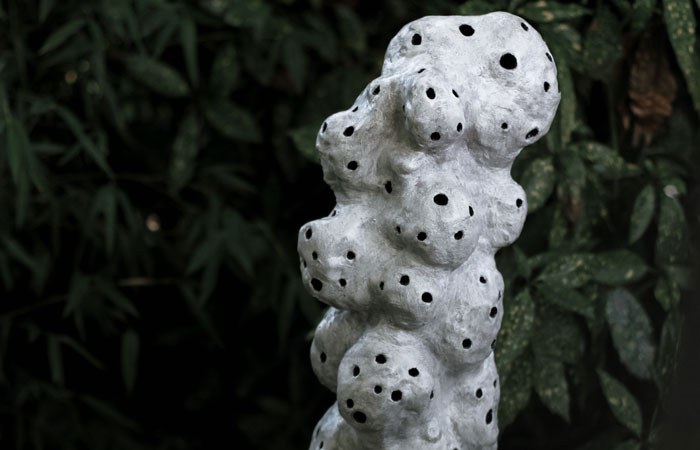
Having grown up learning about insects from her beekeeper father, Marlene Huissoud is no stranger to the plight of bees. Her Central Saint Martins graduate show explored the potential of insect waste streams, “co-partnering” with bees and silkworms to create new materials. Having continued to research and experiment in this manner, producing sumptuous sculptural forms and surface materials inspired by and ‘from’ nature, one of her latest creations can rather aptly be described as a “hotel for bees.” Whilst that may sound like a novel idea, Marlene is emphatic in her reasoning, “We have been selfish. We have used resources of our dear planet, but it is not a time to cry, it is a time to act. These hotels are made for pollinators to find a refuge, nest and hibernate.” With insect numbers sharply declining and biodiversity at a risk, projects like this are invaluable in offering both a sanctuary for insects and awareness of the problem. The colours used are specifically chosen to reflect those that bees are attracted to in nature and the materials used to make them are from nature, namely unfired clay, which is coated in a natural binder to make them weatherproof.
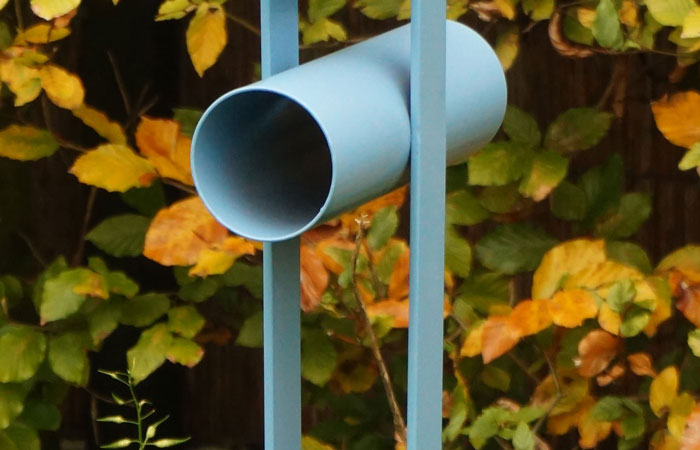
The protection of bees and insects is a theme in Dutch designer Nick Beens’ work too, notably his Totems, which have a contemporary aesthetic that makes them ideally suited to highly urbanised areas, where insects are most at risk. The powder coated metal structures are formed of clean lines and blend in with the surrounding human architecture, mirroring day-to-day service structures like post boxes. By filling the cylindrical chambers with reeds users create a sanctuary for insects and like Huissoud, Beens was also heavily inspired by his family history. In this case, Beens’ grandfather grew cane and worked the fields of Overijssel, an area in which his father is still a park ranger to this very day. In creating urban homes for insects he continues this green-fingered lineage whilst inviting others to become a part of the process; bearing witness to and tending to the needs of precious pollinators.
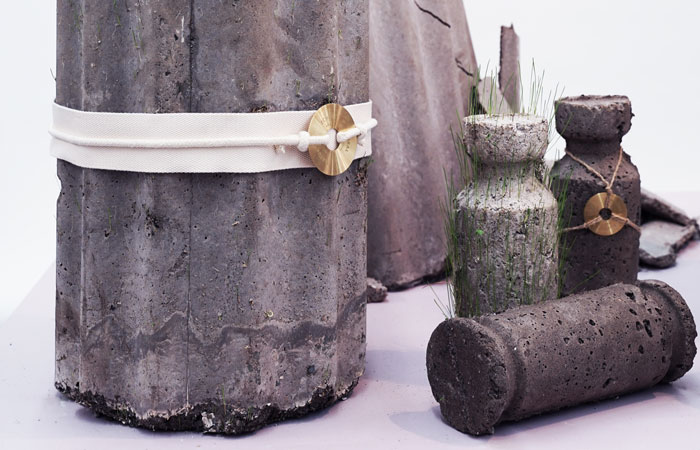
Exploring one’s heritage and with it, our deep connection to the earth, is pertinent to a generation of designers old enough to have experienced an education system that spoke of climate change, but young enough to realise that they must take a lead when it comes to making a positive change for the planet. Having grown up in rural Sicily, Royal College of Art graduate Martina Taranto has clear views on how, “human intelligence and sensibility have a crucial role to play in the next generation of a super-organic natural world,” the fundamental responsibilities of which are “to embrace a greater ecological and ecosystemic balance.” Her project Viral Nature comprises objects made from a specially formulated composite that is 84% organic and most importantly, able to host life. The material is embedded with seeds that will sprout and commence a natural cycle of growth, meaning that a piece such as the Fusto Stool will one day be covered in greenery. In order for the objects to thrive a conscious user is required, and as they continue to tend to the piece, greater emotional connections to nature are made. What’s more, should the objects ever fall into disrepair they will not become a permanent ruin but instead slowly integrate directly back into nature.
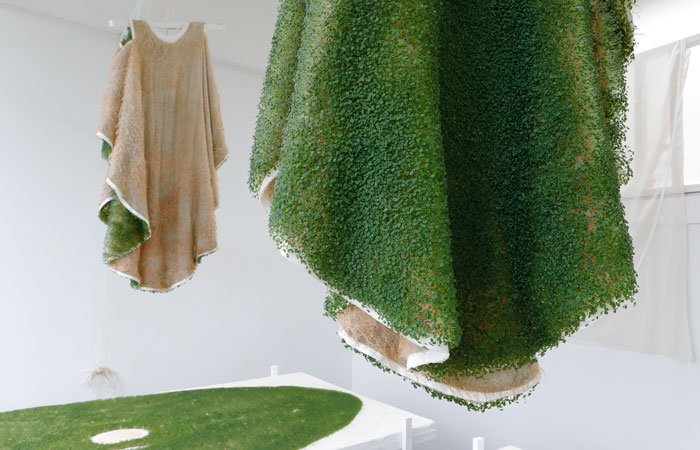
The idea of growing surface materials is shared by Dasha Tsapenko, although her focus is on a different application. Growing Fur seeks to rethink our relationship to clothing and in the process, our place in the ecosystem. By cultivating seeds onto fabric, in this case Chia seeds, she has created wearable living surfaces that require nurture and care. Whilst still relatively conceptual, the idea is a far cry from those established by fast fashion and one that forces us to reconsider the way in which we consume our clothing.
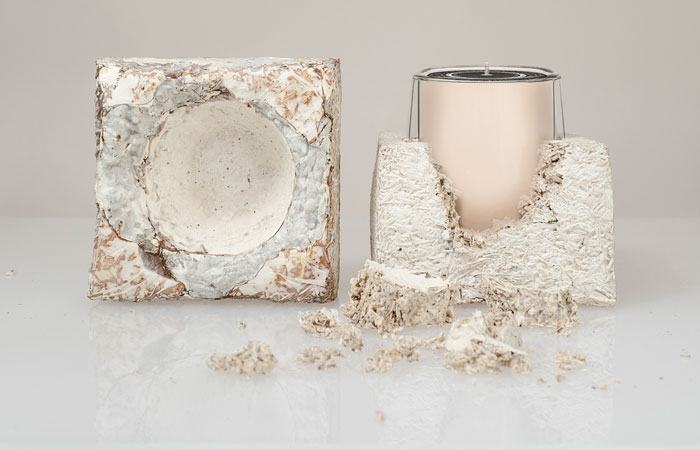
In truth botanicals have long been used to make many of our products but there is continued evidence to show that innovations can still be made. Haeckels has been harvesting locally sourced seaweed on the South East coast and transforming it into fragrances and skin care for the last six or so years. The products are intrinsically linked to nature and now so is the packaging used to protect them. The root system of mushrooms, known as Mycelium, has been cleverly grown in moulds and serves as a replacement for plastics and other non-organic packaging. So, whilst the user might benefit from natural vitamins applied to their skin or the sensory delight of a delectable scent, they can also purchase these products safe in the knowledge that at worst, the packaging will completely decompose in landfill, and at best, it can be recycled by planting it back in the ground; adding to the soil quality in the process.
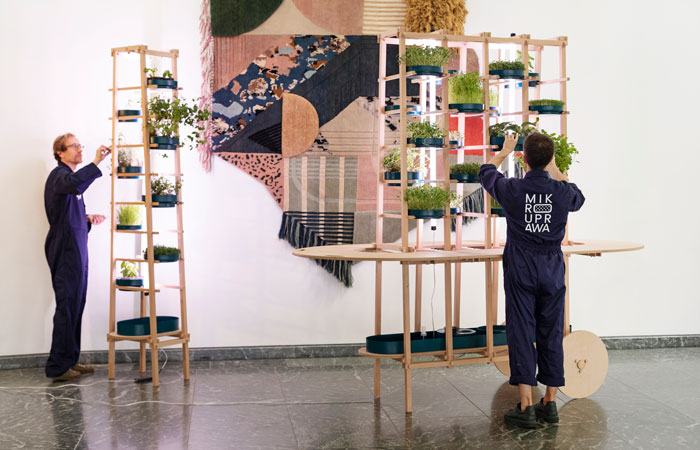
Of course, consumption is still one of the primary reasons for growing plants. But whilst the process is relatively straightforward in places that offer enough space and consistent conditions, the same cannot be said for the busy metropolis. In our cities, green spaces tend to serve as communal parks, with few places available in which to grow edible plants and vegetables. Mikrouprawa by Polish design studio Dryf is a modular and moveable vertical growing system designed to cultivate edible plants in even the smallest and darkest interior environments. The stylish tiered system utilises hydroponichttps://dryf.pro/s, a method of growing plants without soil, using mineral nutrient solutions in a water solvent. In increasingly urbanised areas this system offers a chance to grow food whilst simultaneously reconnecting its users to nature. For whilst the system is relatively easy to maintain, it still requires care and attention, once again uniting humans with the life cycle of other living things.
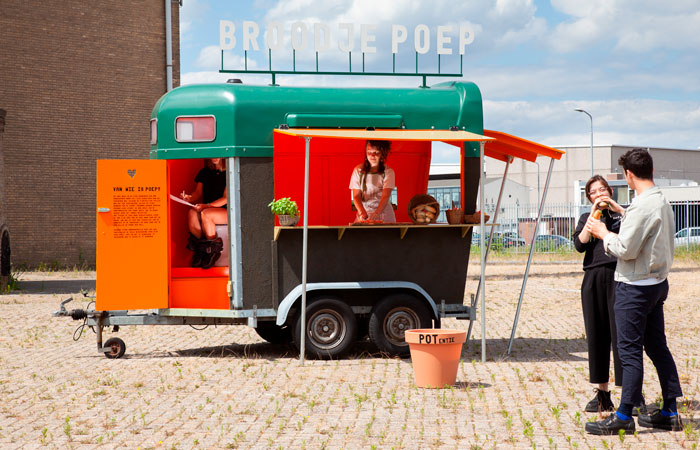
Once translated from Dutch to English BROODJE POEP or SHIT SANDWICH; a project by Design Eindhoven Graduate Fides Lapidaire, doesn’t whet one’s appetite. But the project does offer edible sustenance from organically grown food, although as the title suggests, its origins are neither conventional nor an easy sell. Excrement is usually disposed of as quickly as possible, and yet is widely accepted as a fertilizer for plants in the form of manure, so why not use human excrement? In the near future we may well find ourselves eating a tasty sandwich from a food truck (equipped with dry toilet,) the ingredients of which have been grown with the aid of human compost. Returning the nutrients and micro-organisms from our excrements to the soil is a centuries-old technique and one that may well be more economically beneficial than using modern fertilisers. It’s certainly food for thought.




